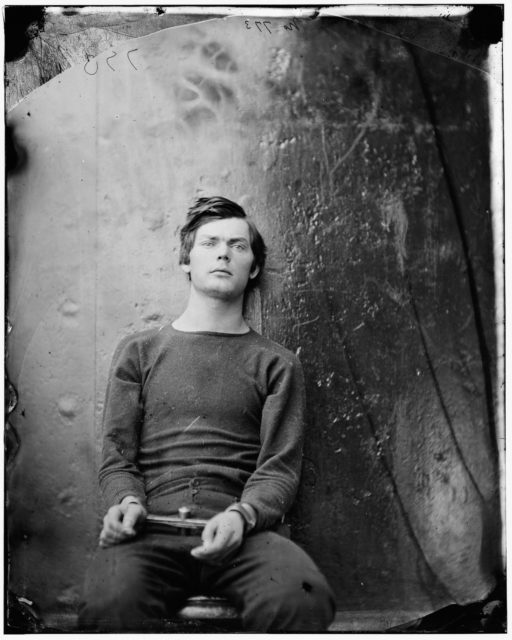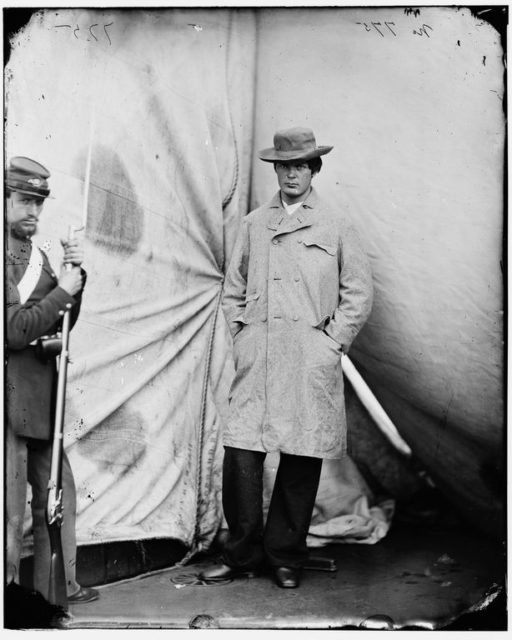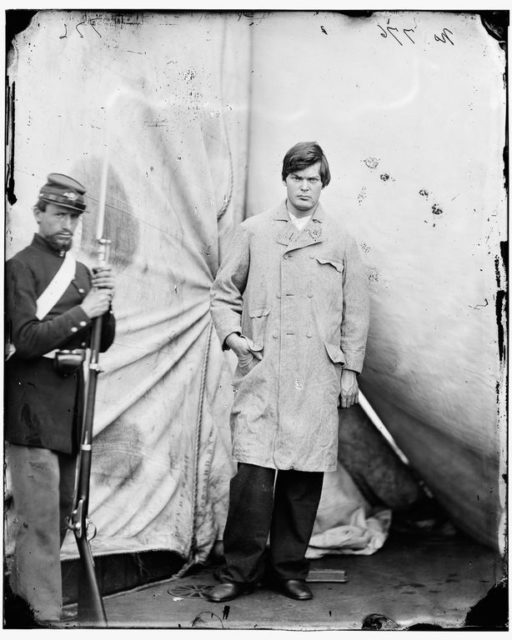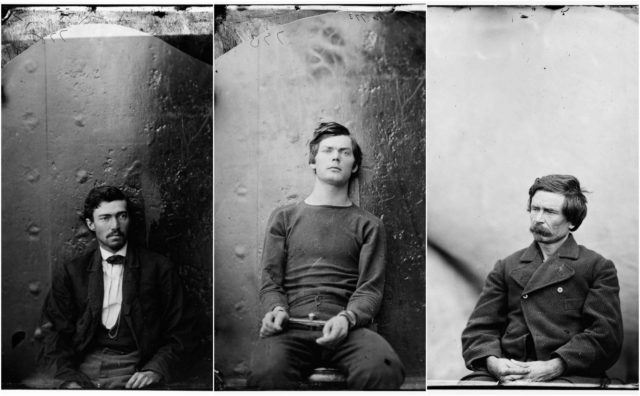





All of those listed above and more were rounded up, imprisoned, and released. Ultimately, the suspects were narrowed down to just eight prisoners (seven men and one woman)Samuel Arnold, George Atzerodt, David Herold, Samuel Mudd, Michael O’Laughlen, Lewis Powell, Edmund Spangler (a Ford’s stagehand who had given Booth’s horse to “Peanuts” Burroughs to hold), andMary Surratt.
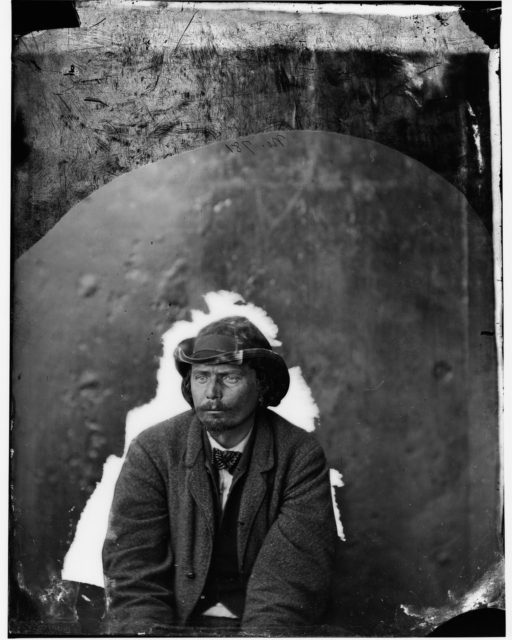
The eight suspects were tried by a military tribunal ordered by then-President Andrew Johnson on May 1, 1865. The nine-member commission was presided over by Major General David Hunter. The other eight voting members were Major General Lew Wallace, Brigadier Generals Robert Sanford Foster, Thomas Maley Harris, Albion P. Howe, and August Kautz, Colonels James A. Ekin and Charles H. Tompkins, and Lieutenant Colonel David Ramsay Clendenin. The prosecution team was led by U.S. Army Judge Advocate General Joseph Holt, assisted by Congressman John A. Bingham andMajor Henry Lawrence Burnett. The transcript of the trial was recorded by Benn Pitman and several assistants, and was published in 1865.
The fact that they were tried by a military tribunal provoked criticism from both Edward Bates and Gideon Welles, who believed that a civil court should have presided. Attorney General James Speed, on the other hand, justified the use of a military tribunal on grounds that included the military nature of the conspiracy, that the defendants acted as enemy combatants and the existence of martial lawin the District of Columbia. (In 1866, in the Ex parte Milligan decision, the United States Supreme Court banned the use of military tribunals in places where civil courts were operational.)The odds were further stacked against the defendants by rules that required only a simple majority of the officer jury for a guilty verdict and a two-thirds majority for a death sentence. Nor could the defendants appeal to anyone other than President Johnson.


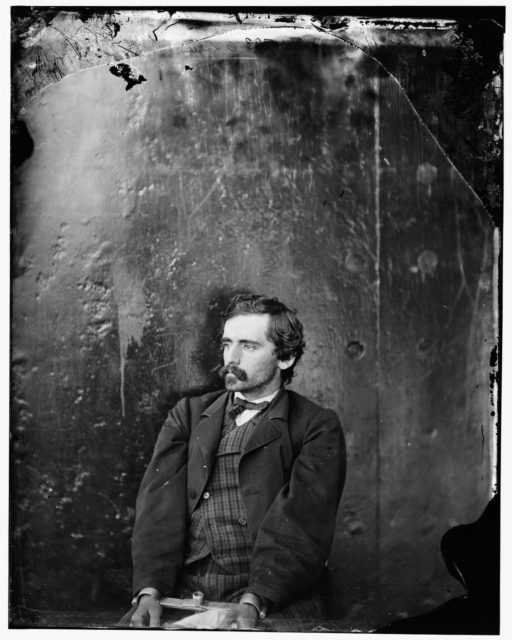


The trial lasted for about seven weeks, with 366 witnesses testifying. Louis Weichmann, released from custody, was a key witness. All of the defendants were found guilty on June 30. Mary Surratt, Lewis Powell, David Herold, and George Atzerodt were sentenced to death by hanging; Samuel Mudd, Samuel Arnold, and Michael O’Laughlen were sentenced to life in prison. Mudd escaped execution by a single vote, the tribunal having voted 5–4 against hanging him. Edmund Spangler was sentenced to imprisonment for six years. Oddly, after sentencing Mary Surratt to hang, five of the jurors signed a letter recommending clemency, but Johnson refused to stop the execution. (Johnson later claimed he never saw the letter.)
